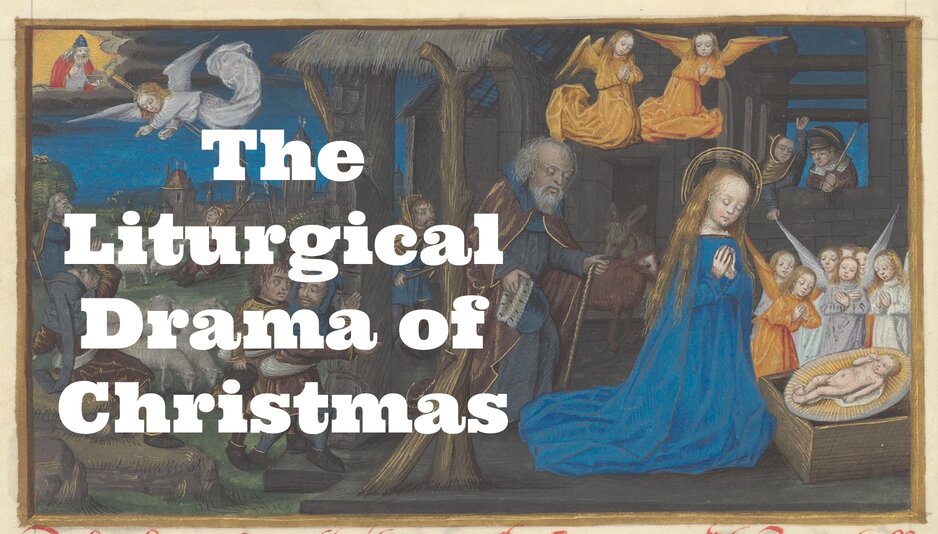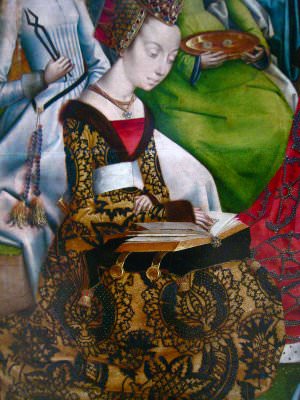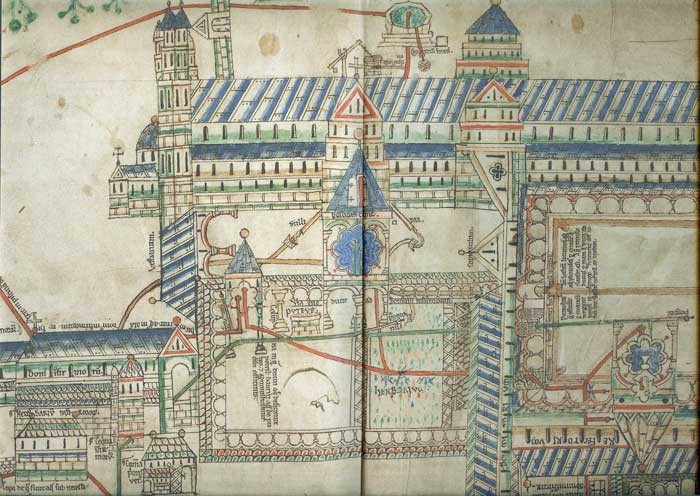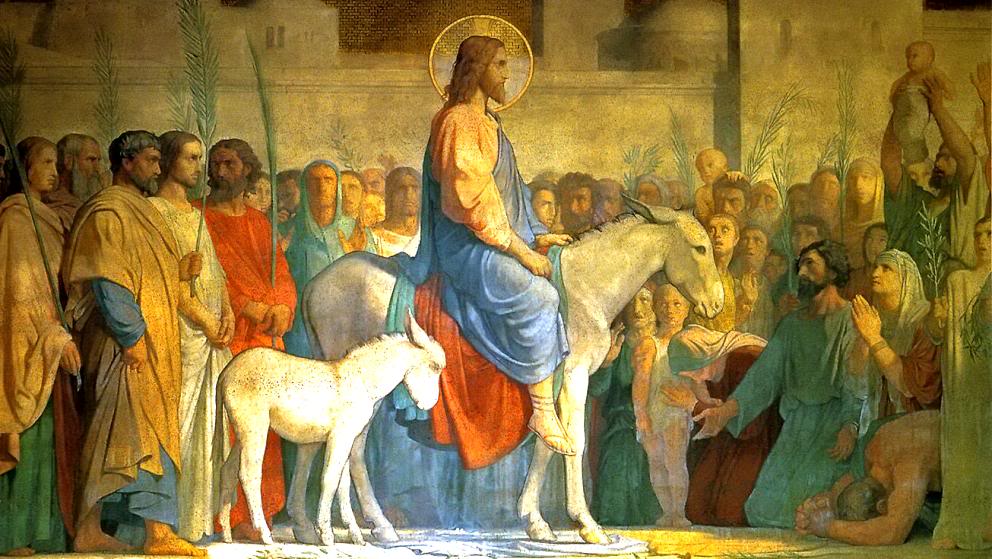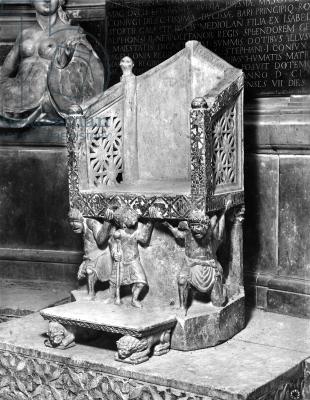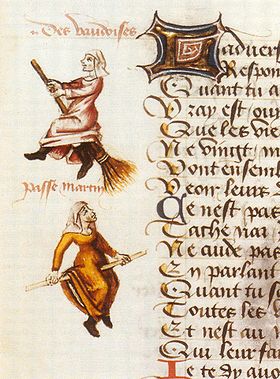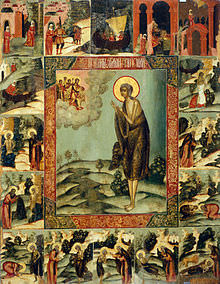The Liturgical Drama of Christmas
An in-depth look at the music of liturgical drama and its role within medieval Christmas celebrations.
Who is this King of Glory? Robert I of Scotland (1306-29), Holy Week and the consecration of St Andrews Cathedral
As an aspiring monarch Robert Bruce had the best of teachers – King Edward I of England. According to Sir Thomas Gray, Robert served in his youth as a ‘bachelor’ in Edward I’s household. If so, this may have brought the young Bruce into direct contact with Edward’s masterful deployment of ceremony, institutional space, image, text and liturgy.
Women’s Devotional Bequests of Textiles in the Late Medieval English Parish Church, c.1350-1550
My investigation is set within the context of the current high level of interest in the workings of the late medieval parish.
Monastic Space and the Use of Books in Anglo-Norman England
My summary of a paper given at the Institute of Historical Research on: Monastic Space and the Use of Books in Anglo-Norman England.
The Augustinian Canons in England and Wales: Architecture, Archaeology and Liturgy 1100-1540
The Augustinian canons remain very much the Cinderellas of British medieval monastic history.
St George’s Day: A Cultural History
The modern celebration of St. George’s Day, frequently associated with intense English nationalism, grew out of a religious feast that commemorated a Middle-Eastern individual who died protesting an intolerant empire.
Transformations of Print into Painting: A Case Study of the Context of Prints in an Illustrated Brigittine Psalter
This liturgical psalter raises issues of the production and consumption of religious texts in convents in the northern Netherlands.
On Omissions and Substitutions in the Medieval English Translations of the Gospel
In view of this we carried out research on two English medieval translations of John’s Gospel, believing that their comparison would not only reveal differences in the perception and experience of biblical concepts (expressed through language), but also those in culture, society and cognition that occurred in the period between their occurrence.
The King’s Three Images: The representation of St. Edward the Confessor in historiography, hagiography and liturgy
This study will revolve around the characterisation of Edward as constructed in the various surviving texts, and its emphasis will be twofold: my primary concern is to explore how St. Edward the Confessor’s images were constructed, i.e. how he is represented in the various texts written about him.
Christ in Motion: Portable Objects and Scenographic Environments in the Liturgy of Medieval Bohemia
It accordingly seems clear, from many preserved accounts, that by the end of the fifteenth century the rubric of the Church of Prague was no longer the same and that progressive versions contained different layers of alteration to the performance practice of Palm Sunday ritual.
Teaching the Creed and Articles of Faith in England: Lateran IV to Ignorantia sacerdotum
The broad conclusion of this thesis is that the available evidence shows that the basic principles of Christian doctrine were available both to the lower clergy who would preach and teach the Creed and Articles of Faith and also to the laity who would receive this preaching and instruction.
Dramatic ritual and preaching in late Anglo-Saxon England
My thesis involves an examination of the dramatic liturgical ritual of the late Anglo-Saxon period and its relationship to other aspects of Christian worship, especially vernacular preaching.
Scottish saints cults and pilgrimage from the Black Death to the Reformation, c.1349-1560
This thesis will question this premise and provide the first indepth study of the cults of St Andrew, Columba of Iona/Dunkeld, Kentigern of Glasgow and Ninian of Whithorn in a late medieval Scottish context, as well as the lesser known northern saint, Duthac of Tain.
The Mystery of the Marble Man and his Hat: A Reconsideration of the Bari Episcopal Throne
Until the twentieth century, the throne was universally held to have been sculpted in or immediately before 1098 for Elias, the abbot of San Nicola and archbishop of Bari and Canosa.
Church Wall Paintings and Mosaics: Principles of their arrangement and relationship to church architecture
The history of Orthodox church wall-painting and mosaics, East and West, is a very rich one. On the one hand it reveals tremendous creativity in the Church’s response to architectural and pastoral changes. On the other hand it shows how consistently it has been faithful to unchanging spiritual principles.
English Mystery Plays – Staging Patterns and Orality Features
Medieval English theatre is a term covering a large body of plays, performances and theatrical activities. The entire period of medieval drama spans for five hundred years.
“The Eucharist and the Negotiation of Orthodoxy in the High Middle Ages”
This paper is part of Adam Hoose’s dissertation. It examined the differences between Waldensians and Franciscans in their treatment of the Eucharist. It also explored why the Waldensians were unsuccessful in their bid to become a legitimate religious order and were eventually marginalized as heretics.
“Kings as Catechumens: Royal Conversion Narratives and Easter in the Historia Ecclesiastica” by Carolyn Twomey (Boston College)
This is the first paper from the Haskins Conference at Boston College – it focused on Bede’s narratives of Royal conversion.
Sacrilege, Sacrifice and John Barbour’s Bruce
The narrative accomplished on this plane is critical to the foundation, or re-foundation, of royal order after a usurpation, yet it is more than a dynastic expedient;3 rather, it is a story that, even as it bridges the gaps in credibility and legitimacy attendant upon a new royal line, primally reinforces the governing fictions of kingship as an institution.
Performance, transmission and devotion: understanding the Anglo-Saxon prayer books, c.800-1050
This thesis offers a corrective to standard histories of medieval devotion that circumvent the Anglo-‐Saxon contribution to medieval piety, by investigating private prayers found in certain manuscripts between 800 and 1050. It examines the manuscript tradition of prayer, to reveal the reality of prayer performance in Anglo-‐Saxon England.
A Cluniac Office of the Dead
The office of the dead has become a familiar portion of the divine office to anyone who studies chant, but this is the limit of most research. Although Cluny maintained a reputation for its frequent celebration of the office of the dead, the Cluniac office of the dead has only been mentioned in passing in many chant studies.
Mary and the Jews in Anglo-Norman Monastic Culture
This thesis looks at the ways in which Benedictine monks contributed to the fashioning of images of Jews in sources related to the Marian cult in the post-Conquest period, 1066-1154.
The Libro de la Regla Vieja of the Cathedral of Seville as a Musicological Source
The significance of this regla de coro to Seville’s pre-Tridentine use prompted me to seek here a deeper understanding of the book, and especially the textual transmission of its contents, confusion over which has led, hitherto, to most of the difficulties and errors concerning its dating.
VAGANTES: Between Tradition and Change: Monastic Reform in Three fifteenth-century German Redactions of the Life of Saint Mary of Egypt
Using the life of St. Mary of Egypt, this paper will consider three different Middle High German versions produced by reform communities and will analyze how the reform ideologies and goals manifest in the texts.
A Reassessment of the Feast of Fools: A Rough and Holy Liturgy
A younger contemporary of Richard of St.-Victor, Jean Beleth (fl. 1160), acknowledged the popular name of the feast: “The feast of the subdeacons, which we call ‘of fools’, by some is executed on the Circumcision, but by others on Epiphany or its octave.’
